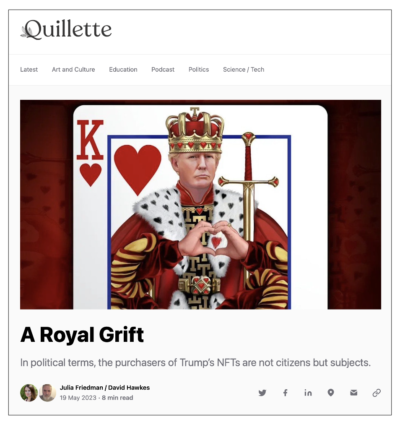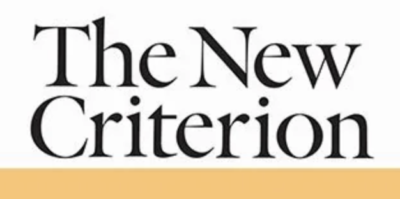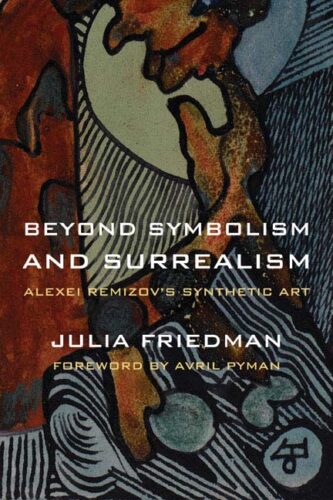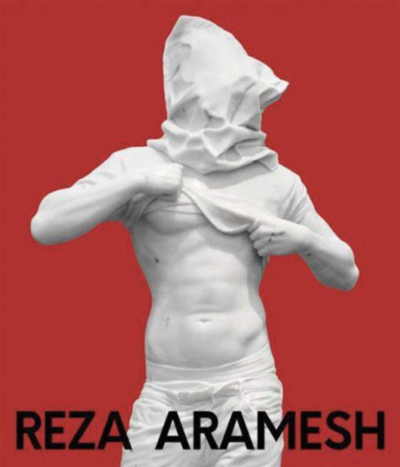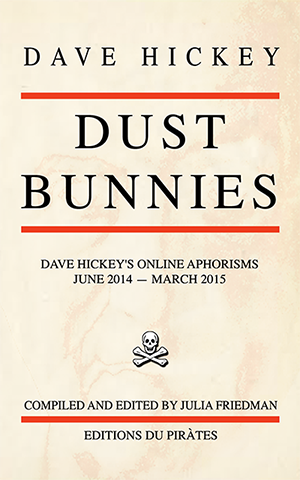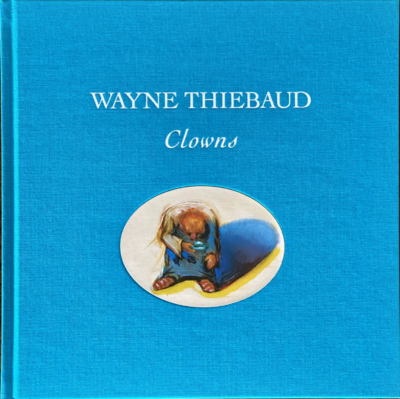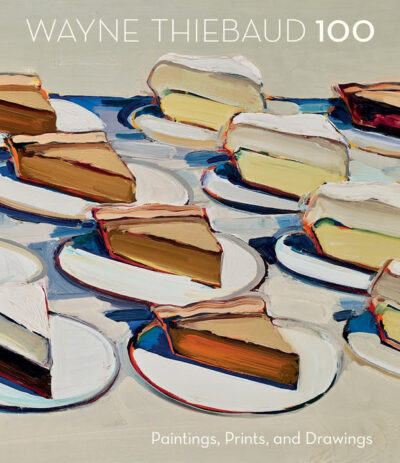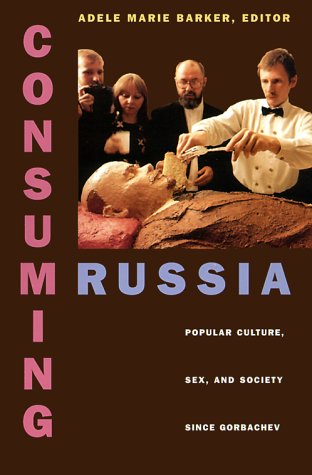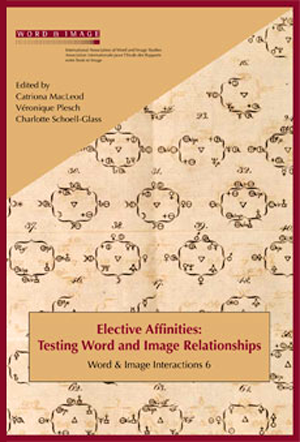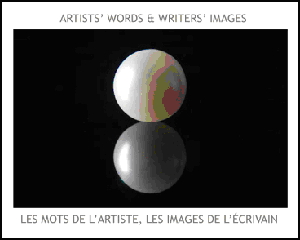Making NFTs Great Again
Non-fungible tokens are so passé. The initial furor prompted in March 2021 by Christie’s sale of Beeple’s opus for the princely sum of $69,346,250 has long since subsided. Damien Hirst has had enough time to wrap up his year-long Currency project—an experiment which pitted unique physical paintings against their blockchain inscriptions. Donald J. Trump is a conspicuous latecomer to this party, a fact that he was oddly eager to emphasize when he announced his initial drop of NFT trading cards in December, 2022. Trump admitted that NFTs were no longer a “hot category. … Everyone said ‘what’s he doing it for—that’s so cold.’” Normally, Trump presents himself as a leader not a follower, so what could have led him to jump into this game so late, and even to boast about his tardiness? More perplexing still, why would he issue a second series of NFTs in mid-April of this year, thereby causing the value of the initial collection to promptly collapse?
In the aftermath of the original drop, Trump claimed that his motives were purely aesthetic, a point he reiterated in a Truth Social post on April 19th: “My New Trump Digital Trading Cards Series 2 is the Number One Collection in the World. It must be that people love the art.” From its purported triumph, Trump deduced that this “really incredible artwork” must be “very beautiful and interesting.” Beauty is in the eye of the beholder, of course, but the cards are certainly interesting. The first collection of 45,000 NFTs comprised extravagantly camp and heroic portraits of Trump as a musclebound cowboy, a rockstar, and even an astronaut—quintessentially American images. In sharp contrast, a number of images in Series 2 have a distinctly monarchical flavor.
To read the entire article click on the image below.
